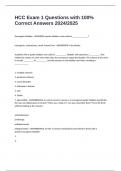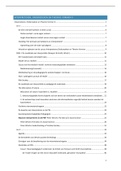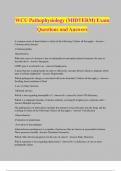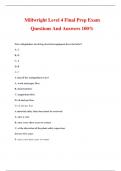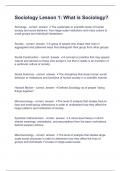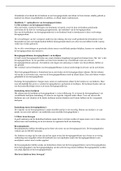Exam (elaborations)
HCC Exam 1 Questions with 100% Correct Answers 2024/2025
HCC Exam 1 Questions with 100% Correct Answers 2024/2025 Neurogenic Bladder - ANSWERSA spastic bladder is also called a ______________? neurogenic, contractions, small, normal, low - ANSWERSFill in the blanks: A patient with a spastic bladder, also called a __________ bladder, will exper...
[Show more]
